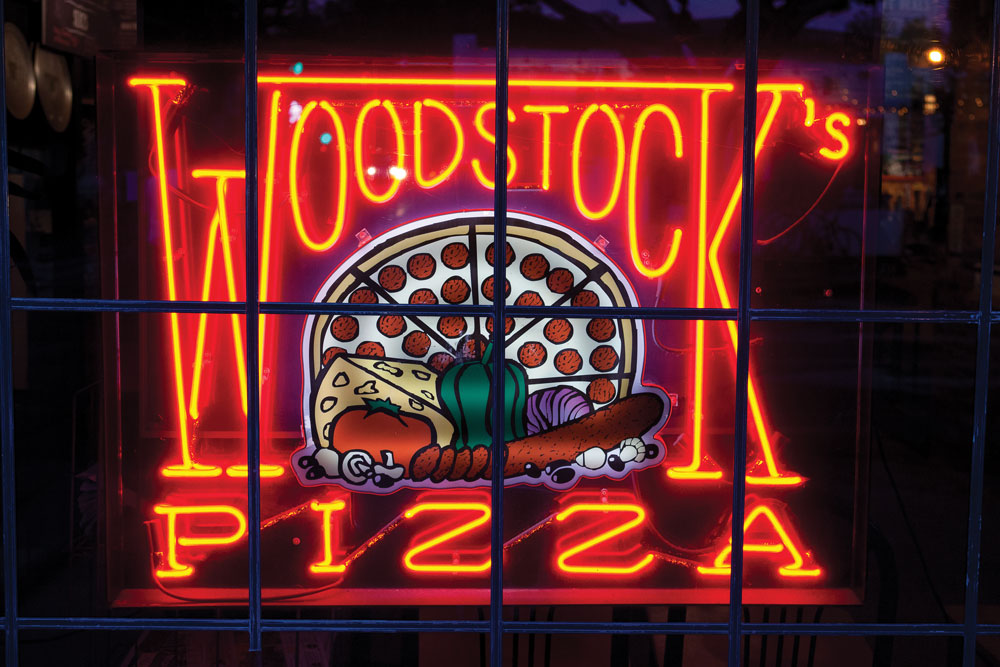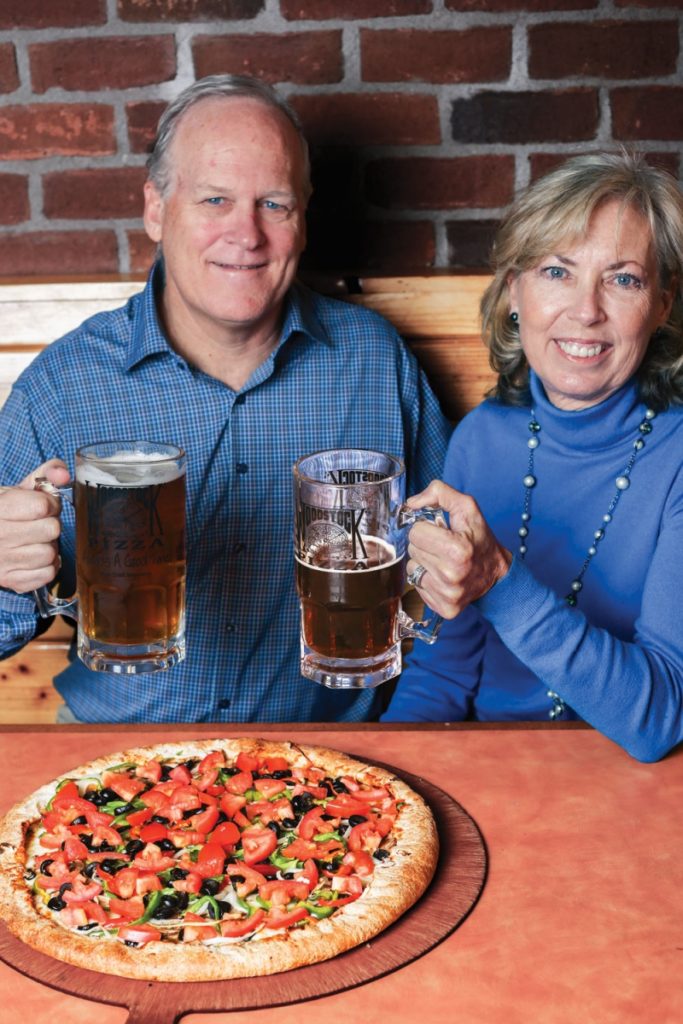 |
|
Jeff and Laura Ambrose, co-owners of Woodstock’s Pizza in California, have rolled out a new menu with gluten-free, vegetarian and vegan options as well as “cleaner” ingredients. |
As customers set their minds on getting healthier in the new year, Woodstock’s Pizza, with locations all over California, wants to help. The company has made a big move toward cleaner, healthier ingredients so that pizza lovers “can still rejoice in eating pizza without the guilt.” That means switching to a nitrate-free pepperoni, organic vegetables, cheese and fruits, and organic sauces and dressings. The company also eliminated high-fructose corn syrup from its ingredients list. So how’s it going so far? PMQ talked to Woodstock’s co-owner Laura Ambrose to get the skinny:
PMQ: Tell us a little bit about Woodstock’s. What’s the history behind it?
Ambrose: The company was founded by Chuck Woodstock in 1978 in Corvallis, Oregon. He expanded to California in 1980. Unfortunately, he and his partner were killed in a private plane crash in 1985. Jeff Ambrose, who began as a delivery driver for the company, eventually became president and then bought out the other family members in 2001. He and his management team now own all eight California restaurants.
PMQ: You’ve got some interesting menu items with great names, such as the Grateful Veg and the Sriracha-cha. Who develops these signature pies, and what are your top sellers?
Ambrose: Our Grateful Veg has been around since the beginning and is definitely a top seller, especially with our signature wheat crust. Most of our new pizzas and sides come from our own employees, including the
Sriracha-cha, the Kickin’ Carnitas, the Buffalo Bird, etc. We have also run contests with our Facebook fans to encourage their submissions for new pizza ideas.
PMQ: You recently updated your menu to include healthier ingredients. What was the motivation for that? Were you getting a lot of questions and special requests from your customers?
Ambrose: We definitely listen to our customers, both in the store and via social media. To begin with, we have always had a policy that our customers could bring in any ingredient to add to their pizzas if we don’t have that ingredient in stock. The only exception here is that we decided not to add marijuana to customer pizzas, even though it has been brought in and requested several times. It could create a contact high for everyone in the restaurant!
[As customers brought in their own favorite ingredients] we started to see that we needed to add Daiya cheese for our vegan guests. When we started getting requests for gluten-free pizza, we tried dozens of different crust options, most of which tasted terrible! Finally we found one (made off-site, since we make our flour dough on-site each day) that has earned hundreds of rave reviews.
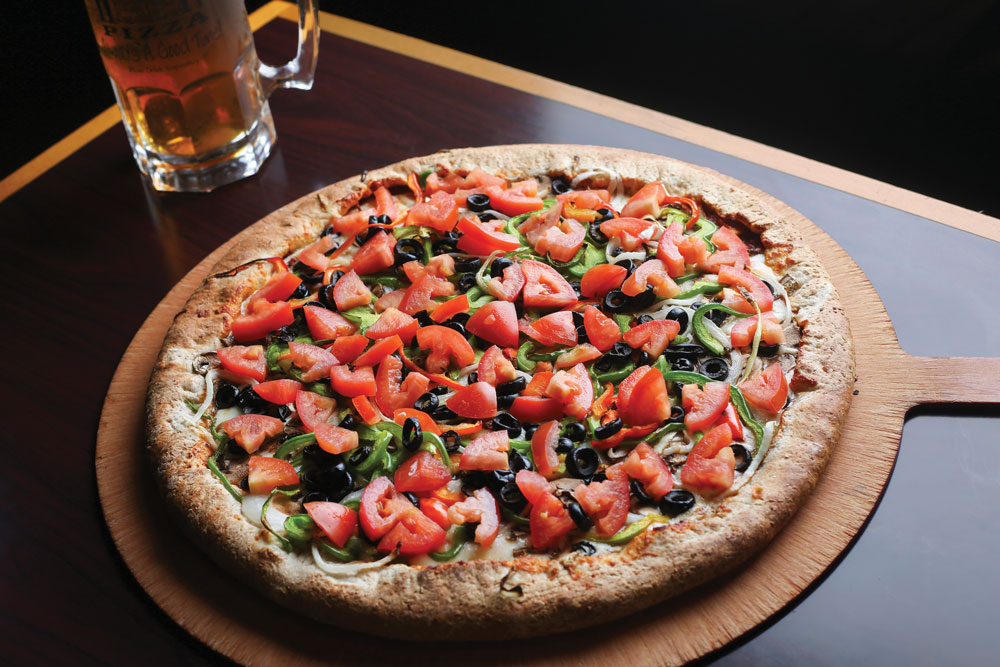 |
|
As a vegetarian, Woodstock’s co-owner Laura Ambrose is sensitive to the health concerns of her customers. |
PMQ: Tell us about some of the healthier ingredients you’re using now. What’s in, and what’s out?
Ambrose: We believe pizza can be a healthy food option and actually covers all of the major nutrition elements. We have always used premium whole-milk mozzarella on our pizzas (i.e., no fake cheese or fillers). And since the beginning we’ve emphasized fresh veggies and meats. We have had low-fat and gluten-free options for at least 15 years. As a vegetarian myself, I’m sensitive to having options for vegans and organic vegetables whenever we can. The new menus that we’re rolling out for 2017 have coding for gluten-free, vegan and vegetarian options. We have changed our pepperoni and sausage to nitrate-free. By the way, no one seems to care about low-fat anymore.
PMQ: How will using organic and nitrate-free ingredients affect your food costs? Will those costs go up?
Ambrose: Our costs have definitely gone up as we strive to offer higher-quality, premium ingredients, especially since we decided we would not change the amount of toppings on our pizzas in an effort to control costs. We are one of the highest-priced pizza restaurants in our towns, and that comes with some anxiety, but so far we’ve found that it hasn’t hurt our sales at all.
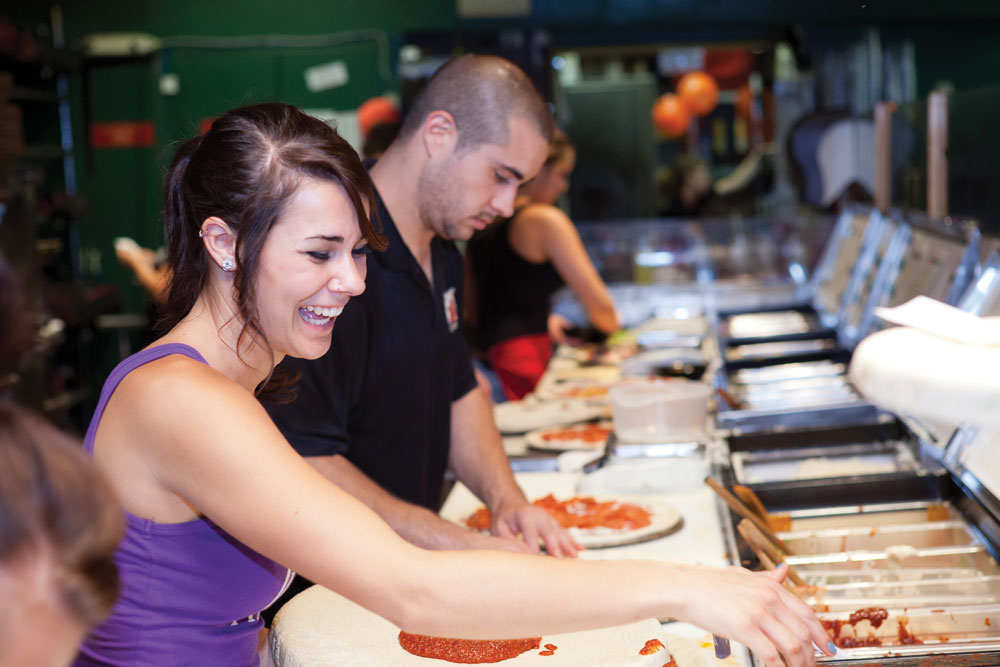 |
|
Woodstock’s food prices went up after it switched to more nitrate-free and organic ingredients, but higher prices haven’t hurt its sales. |
PMQ: Did you have any trouble sourcing these healthier ingredients?
Ambrose: Yes, it isn’t easy to find these ingredients. We’ve been fortunate to have a supplier (Saladino’s) that’s willing to work with us to find what we need. With the volume we do in our eight restaurants, we’re able to convince them to add items. We often attend trade shows to find companies that produce the high-quality ingredients we’re looking for.
PMQ: As for the gluten-free offering, how challenging was it to develop a crust with the right taste, texture and baking qualities?
Ambrose: As I said, we work with an outside company to source our gluten-free crusts. Finding a crust we really liked, one that worked with lots of toppings and cooked well in our ovens, was very challenging. I’m really glad that the sales rep for our distributor was insistent that I try this one, because, honestly, I was done with taste-testing gluten-free that tasted like cardboard. Ours are really good, with a garlic infusion—they’re so good that we have customers who don’t need gluten-free say they prefer this crust.
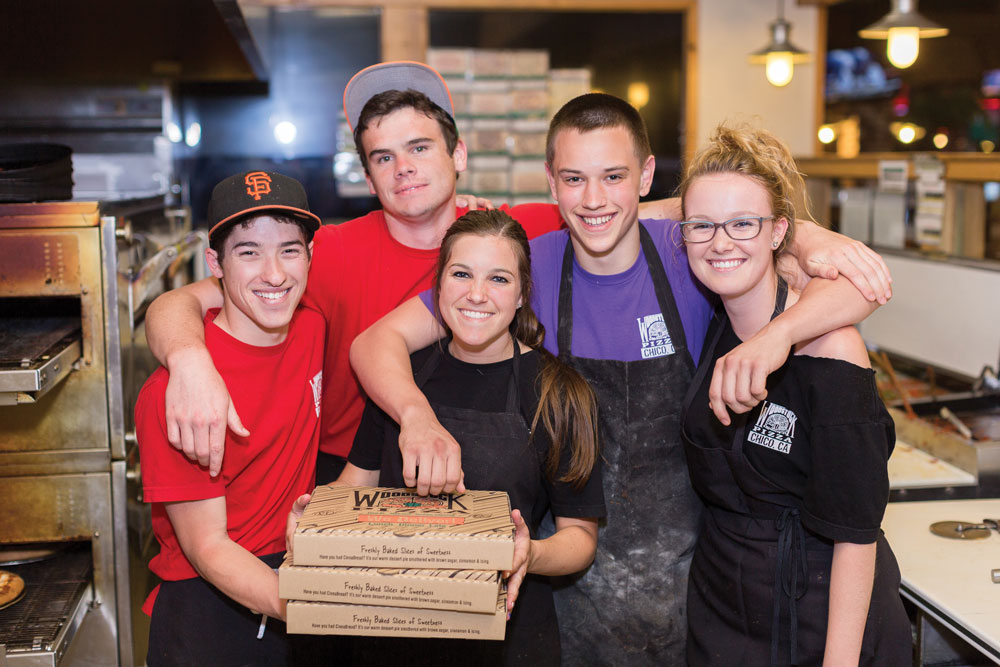 |
|
Woodstock’s has a “continuous pipeline of new pizza and side ideas,” thanks to its creative and engaged employees. |
PMQ: With these new ingredients and crusts, will you be adding new signature pizzas to your menu?
Ambrose: Yes! We have a continuous pipeline of new pizza and side ideas, thanks to our creative employees. We have also employed a professional chef from time to time, especially to fine-tune some of our flavor profiles. We especially like seasonal options, using fresh ingredients with a limited time frame. We’re fortunate that all of our restaurants are in California, where we have a continuous supply of locally sourced fresh ingredients. We also hope to work more closely with some of the agriculture programs at nearby universities.
PMQ: In our annual Pizza Power Report (December 2016), we recommended that our readers do exactly what you’re doing—look into healthier, cleaner, more organic ingredients. As someone who has gone through this process yourself, was it harder or easier than you expected it to be? What was the toughest challenge or obstacle to overcome?
Ambrose: I won’t lie—it’s not easy. I’m actually amazed how often we still see MSG, nitrates, high-fructose corn syrup, etc. in topping options. We ask right away when we look at new sources. The other challenge is finding a consistent, reliable source that can produce the volume we need. That’s been the toughest part with identifying locally sourced ingredients at the community level. Many of the small farms are blown away when we tell them how much we need of a specific ingredient. Our Santa Barbara store actually does a farmer’s-market pizza each week, and I appreciate the lengths our manager there goes to in sourcing what he needs for that pizza. I’d like to see this implemented at all of our stores. But when we say we offer a specific product, we don’t want to add “while supplies last.” That’s frustrating to customers. This is a constant challenge, and one that we will continue to pursue, since our goal has always been to offer truly amazing pizzas.



